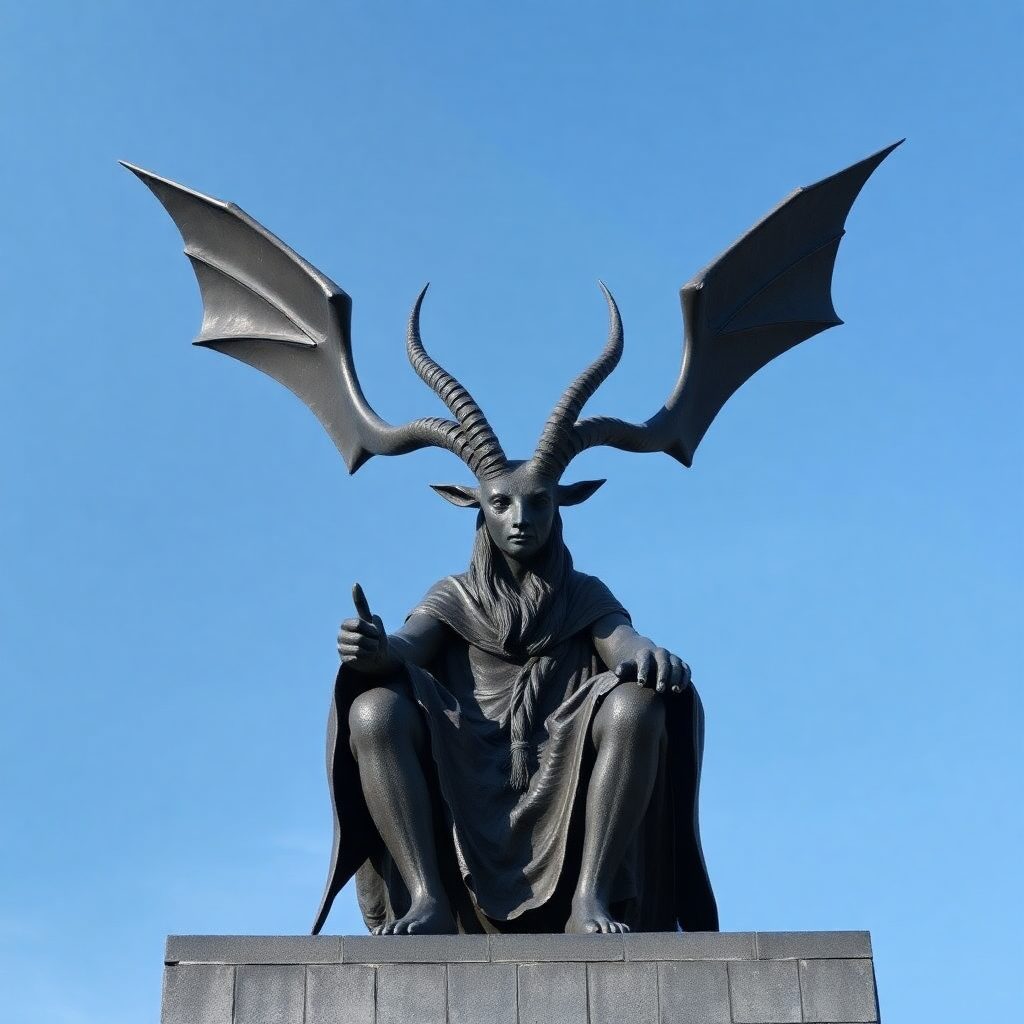Baphomet: From Medieval Accusations to Modern Symbolism
The goat imagery, while often associated with Satan in Christian iconography, draws from older pagan traditions where goats symbolized fertility, earthiness, and natural power.
Few figures in Western esoteric tradition have been as misunderstood, controversial, and symbolically rich as Baphomet. This enigmatic entity has journeyed through centuries of religious persecution, occult philosophy, and popular culture, transforming from a supposed object of heretical worship into a complex symbol of duality, wisdom, and spiritual balance.
Medieval Origins and the Knights Templar
The name Baphomet first emerged during the early 14th century trials of the Knights Templar, the powerful military order that had accumulated vast wealth and influence during the Crusades. When King Philip IV of France moved against the Templars in 1307, seeking to seize their assets and eliminate their political power, accusations of heresy became a convenient tool for their destruction. Among the charges leveled against the Templars was the worship of a mysterious idol called "Baphomet."
Under torture, some Templars confessed to venerating this figure, though descriptions varied wildly—sometimes depicted as a head, other times as a full figure, occasionally described as having multiple faces or bestial features. Modern historians largely regard these confessions as fabricated under duress, noting the inconsistencies in testimonies and the political motivations behind the trials. The etymology of "Baphomet" itself remains disputed, with theories ranging from a corruption of "Mahomet" (Muhammad) to various combinations of Greek words meaning "baptism of wisdom."

Éliphas Lévi and the Modern Image
The Baphomet familiar to contemporary audiences owes much to the 19th-century French occultist Éliphas Lévi, who created the iconic image in his 1856 work "Transcendental Magic." Lévi's Baphomet was not intended as an object of worship but as a symbolic representation of universal balance and the reconciliation of opposites. His drawing depicted a hermaphroditic figure with a goat's head, human torso, wings, and various esoteric symbols arranged throughout.
Lévi's Baphomet incorporated the concept of "solve et coagula" (dissolve and coagulate), representing the alchemical process of breaking down and rebuilding, death and rebirth. The figure's dual male and female characteristics symbolized the unity of opposites, while the pentagram on its forehead represented human mastery over the elements. This symbolic interpretation transformed Baphomet from a historical curiosity into a powerful representation of hermetic philosophy and magical thinking.
Symbolic Meanings and Interpretations
In modern esoteric traditions, Baphomet represents far more than the demonic figure often portrayed in popular culture. The image serves as a complex symbol of balance, incorporating numerous dualities: male and female, human and animal, light and dark, above and below. The figure's pointing gestures—one hand raised toward heaven, the other toward earth—echo the hermetic axiom "as above, so below," suggesting the connection between spiritual and material realms.
The goat imagery, while often associated with Satan in Christian iconography, draws from older pagan traditions where goats symbolized fertility, earthiness, and natural power. The wings represent transcendence and spiritual aspiration, while the torch between the horns symbolizes enlightenment and the light of consciousness. This rich symbolic vocabulary makes Baphomet a powerful meditation on the integration of seemingly opposing forces within human nature and the cosmos.
Modern Religious and Cultural Contexts
Contemporary religious movements have adopted Baphomet in various ways, most notably The Satanic Temple, which uses a Baphomet statue as a symbol of religious freedom and the separation of church and state. Their interpretation emphasizes rational inquiry, individual sovereignty, and resistance to arbitrary authority rather than literal devil worship. This usage demonstrates how ancient symbols can be reclaimed and reinterpreted for modern philosophical and political purposes.
In popular culture, Baphomet often appears as a generic symbol of evil or occultism, though this representation typically lacks the nuanced symbolic meaning intended by occult philosophers. Heavy metal music, horror films, and gothic subcultures have embraced Baphomet imagery, sometimes for shock value but increasingly with awareness of its deeper symbolic significance. This cultural adoption reflects a broader fascination with esoteric symbolism and alternative spirituality in secular society.
Academic and Historical Perspectives
Scholars of religious studies and medieval history approach Baphomet as both a historical phenomenon and a case study in the evolution of religious symbols. The figure illustrates how accusations of heresy and devil worship often reflected political and social tensions rather than actual religious practices. The transformation of Baphomet from medieval legal evidence to modern occult symbol demonstrates the fluid nature of religious meaning and the power of symbols to transcend their original contexts.
Research into the historical Templars has largely debunked the Baphomet accusations, revealing them as products of political persecution rather than genuine religious practice. However, the symbolic Baphomet created by later occultists represents a legitimate expression of esoteric philosophy, regardless of its historical origins. This distinction between historical fact and symbolic meaning remains crucial for understanding Baphomet's role in Western occult tradition.
Contemporary Relevance and Understanding
Today's discussions of Baphomet often reflect broader cultural conversations about religious freedom, symbolic interpretation, and the relationship between mainstream and alternative spirituality. The figure serves as a lightning rod for debates about the role of religious symbols in public spaces and the boundaries of acceptable spiritual expression. Understanding Baphomet requires moving beyond simplistic associations with evil or devil worship to appreciate its complex symbolic heritage.